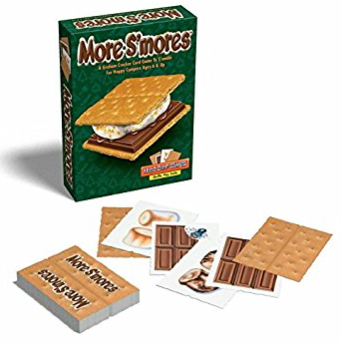In the box: 1 buildable LEGO die, 118 LEGO pieces, 1 building guide, 1 rule booklet
If you are not a regular reader of my blog, and you don't already know what a big fan I am of LEGOs, you can read my post Building Skills With Construction Toys. For my regular readers, I will spare you this time. :)
This LEGO set is unusual in that it is a game. It consists of three robots (red, green, blue) and a buildable die. The robots are small, between 30 -36 pieces each and there are enough pieces so that they can all be assembled at the same time. The building guide shows step-by-step instructions.
Object:
Be the first to build a robot with the same colored parts to win the trophy.
Set Up:
Build the die per the instructions. Assemble the body into their body parts. These body parts with each have several pieces and each robot will end up with a total of six body parts. Put these body parts in a pile in the middle of the players. This is called the scrapheap.
Play:
Each player begins his turn by throwing the die and following these instructions, depending on the color that comes up:
- Blue or red or green - Colored parts. Take a matching colored part from the scrapheap. If one isn't available, take one from another player. Add it to your robot.
- White - Player's choice. Take one colored part of your choice from the scrapheap. If there are none available, you must return one of your parts to the scrapheap.
- Side with 4 colors - Exchange parts. Swap one colored part with one from the scrapheap or one from another player.
- Black - Grab. Take a colored part from the scrapheap or from another player.
Try this with any LEGO set:
- Give a few minutes to examine the pieces at the beginning so that the person can examine the different shapes and how they snap together.
- Turn pieces on the table so that they can't be picked up by the child in the correct orientation. Ask him to turn each piece in-hand after picking it up.
- Place a piece in the individual's palm, or at the base of the fingers, in the incorrect orientation and ask him to bring it to the fingertips and turn it in-hand for placement.
- Ask the child to pick up the model and hold it in one hand while adding pieces with the other hand so that both hands works together while adding pieces (instead of adding pieces while the model is on the table).
- Show the child how to hold the model with the non-dominant hand while "pinching" the new part on with the dominant hand.
- Keep the unused pieces in a pile so that the child will have to search for each needed piece. Turn some of the pieces upside down or half cover them so they will look different from the picture.
- Advise the child to hold the model in the same orientation as the one in the picture to aid in orienting pieces.




